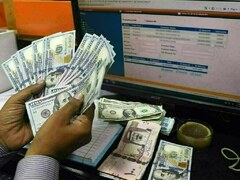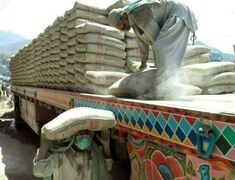The narrative led by Prime Minister Shehbaz Sharif and Finance Minister Muhammad Aurangzeb is that the economy has begun to show signs of improvement, reflected by a contracting current account deficit and falling inflation which lends credence to their repeated pledge that the ongoing twenty-fifth International Monetary Fund (IMF) programme loan will be the last.
The IMF in its press release titled “Executive Board concludes 2024 Article IV consultations for Pakistan and Approves 37-month Extended Fund Facility (EFF) programme” uploaded on its website on 11 October, attributed signs of improvement to strict adherence to its programme design: “Pakistan has taken key steps to restoring economic stability with consistent policy implementation under the 2023-24 Stand By Arrangement (SBA).”
As is common with bureaucrats, be they national or international, there was considerable butt covering by the Fund staff reflected in four refrains found throughout the EFF documents that are serious weaknesses that have persisted in the perennial IMF borrower Pakistan: “(i) sustained efforts, read implementation of the agreed time bound quantitative conditions as well as structural benchmarks, are required during the coming years to entrench macro stability and promote sustainable growth; (ii) implementation of ambitious reforms to broaden the tax base are critical to strengthening fiscal sustainability: (iii) improving human capital investment and protecting the most vulnerable is critical to achieving long term sustainable growth, and (iii) safeguarding financial stability requires a robust institutional framework and consistent and effective use of derived powers.” The irony is that none of these objectives are likely to be attained given the IMF’s programme design approved by Pakistan’s economic team leaders.
In contrast, the programme design is likely to push the lower to middle income groups towards poverty as the budget (reviewed and approved by Fund staff) focuses on generating higher revenue from existing sources (with 75 to 80 percent of all revenue to be collected from indirect taxes whose incidence on the poor is greater than on the rich), allowing a 21 percent rise in current expenditure in spite of an extremely narrow fiscal space, insisting on sale of state-owned entities even though the environment remains poor both domestically as well as internationally, announcing decisions relating to downsizing public sector entities/ministries/departments that are withdrawn as and when the employees take to the streets, while allocation for social sectors or the Benazir Income Support Programme has been increasingly inadequate as poverty levels have risen to a high of 40 percent while population growth remains one of the highest in the region.
Reports suggest that imports continue to be contained through administrative measures, read through delays in opening of letters of credit. If this is indeed the case one may assume that given the staff level agreement reached on 12 July 2024 and the recent Board approval of the 7 billion dollars, the IMF sanctioned this measure for the very short term but as it is averse to limiting imports (a stance clearly enunciated in IMF’s policy documents) the agreement to remove this import inhibiting measure will have to be removed sooner rather than later. This will reenergise the boom-bust cycle.
Exports continue to constitute: (i) low value addition mainly consumer items - cotton, textiles, carpets, rice, surgical goods - whose price in the international market has typically remained low in marked contrast to higher value added products; (ii) surplus after meeting domestic demand though in some cases extremely influential pressure groups have manipulated the system to show a surplus where none exists to the detriment of the general public for example by not only allowing export of sugar by claiming a surplus and seeking an export subsidy on the grounds that the cost incurred by the exporter is higher than the international market price; and (iii) illegal exports, read smuggling, continue. Those items that the government provides fiscal and/or monetary incentives to produce and/or extends untargeted subsidies to bring domestic inflation down (in comparison to the cost of these items in neighbouring countries), the thousands of miles of our porous borders facilitate the outflow of these goods with foreign currency pocketed by the smugglers.
What has historically exacerbated, this boom-bust cycle has been ad hoc policy measures by the decision makers with little or no expertise in the field.
Today the single most appallingly run sector with a debilitating circular debt of around 2.5 trillion rupees (and rising) is the energy sector and one has to simply look at the decisions taken during previous administrations to pinpoint flawed policies.
The contracts with the Independent Power Producers (IPPs) signed by administrations led by Benazir Bhutto, Nawaz Sharif and Pervez Musharraf envisaged capacity payments and repatriation of profits in dollars.
Their assumptions however were not outlandish: demand supply energy gap would be met, they argued, which would in turn fuel productivity and growth.
That did not happen as the manufacturing sector, specifically the export sector, did not sufficiently diversify and to this day seeks fiscal and monetary in incentives to perform.
To compound the problems facing the energy sector rental power projects were envisaged during the PPP-led government (2008-13) with a host of serious contractual issues that were identified under a third party audit; as did the selection of projects under the China Pakistan Economic Corridor (CPEC) during the PML-N led government (2013-17) including coal projects located away from the source of coal (with obvious high transport costs and health issues) with little attention to upgrading the obsolete transmission system that did not have the capacity to evacuate the then existing generation.
The focus on renewables and particularly solar projects for the past two to three years has brought the cost of electricity down for the middle to upper middle income earners who can afford to buy the solar panels but will raise it for the bulk of the population as capacity payment charges to IPPs would rise as demand declines. And to this day there is no policy to deal with this emerging problem.
Another area where policy has yet to be formulated is in setting up the necessary infrastructure for electric vehicles (EV) though the inauguration of manufacturing EVs by the Chinese BYD in the next two years was carried out amidst much fanfare.
To conclude, there is a need for out of the box thinking, the box as defined by adherence to IMF conditions, with widening the tax net given a high priority over revenue generation (and not getting embroiled in low revenue generation measures for example the 50 billion rupees budgeted under the tax on traders on which negotiations are continuing), lower current expenditure (which necessitate voluntary cuts by the major recipients as well as pension reforms that envisage employee contribution), a production base dedicated to exports and a major outlay on research and development that is virtually ignored by our policymakers which has proved to be a major driving force in raising output and exports in the West, China, South Korea and India.
Copyright Business Recorder, 2024























Comments
Comments are closed.